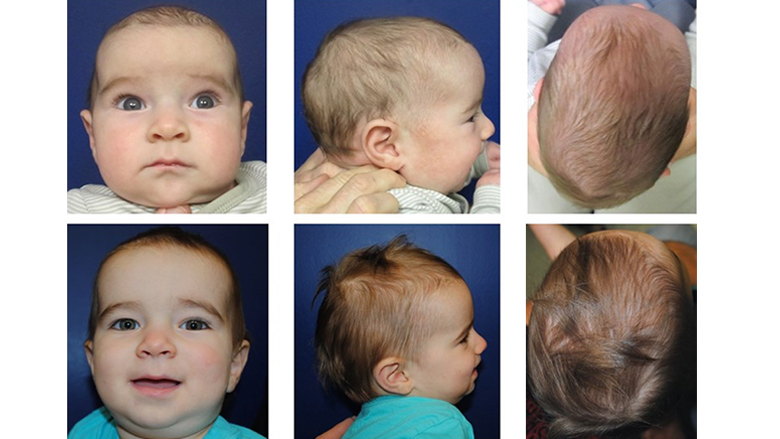What you need to know about Cranioplasty
Contents
Cranioplasty is a surgical procedure to repair a bone defect in the bone of the skull. The defect might be the result of trauma to the head, congenital, or a complication from a previous operation. The procedure involves lifting the skin of the scalp and repairing the contour of the skull using a custom implant or the original skull.
Cranioplasty will improve the appearance of the head, while also provide several medical benefits. It can:
-
Provide protection – a cranial defect may leave your brain vulnerable to damage.
-
Improve function – in some patients, cranioplasty can improve neurological function
-
Eliminate headaches – cranioplasty can reduce headaches that occur due to injury or previous surgery.
-
Enhance aesthetics – a noticeable defect in the skull can affect a person’s appearance and confidence.

What does the Procedure Involve?
A cranioplasty is performed under general anesthesia, the procedure starts with a portion of your scalp where the incision will be made is shaved and cleaned with a topical cleanser to prevent infection. Then, your surgeon will carefully make an incision in the skin of your scalp and lightly separate it into layers to protect the dura, which covers the brain, to access the skull bones.
If the existing bone is undamaged and intact, your surgeon can reshape and reposition it. Special discs, as well as titanium plates and screws, will be used to secure it in place. In cases where your bone has been removed or badly damaged, your surgeon may use a custom contoured implant made from synthetic bone substitute, titanium (plate or mesh), or acrylic. Your surgeon can also use a piece of bone from your body, usually from your pelvis, rib, or skull to repair the bone defect. The implant is then attached to the nearby bones in your skull using titanium plates and screws.
Once the bone or implant is in place, your surgeon will control bleeding and move the scalp back to its original position. The incision is then closed with either sutures or surgical staples.
How Long Should I Stay in the Area?
After cranioplasty, you may need to stay in the hospital for five to seven days. During your stay in the hospital, you will be monitored constantly. You may not be allowed to fly home immediately after you are discharged from the hospital. Therefore, plan to stay in the area for at least 10 to 14 days for initial recovery and follow-up checkups. Your doctor will tell you when it is safe for you to travel by plane or travel long distances.
What’s the Recovery Time?
The recovery time depends on your personal health factors, as well as the reason you need cranioplasty. Early in your recovery period, your activity will be limited. Strenuous activities, such as exercise and heavy lifting, must be avoided for 6 weeks. You should be able to resume your normal activities within a period of 6 to 12 weeks. Your surgeon will be able to give you an idea of what to anticipate following your surgery and they will gradually ease your activity restrictions.
What About Aftercare?
Your medical team will give you post-operative instructions that you need to follow. It is vital that you follow the instructions carefully. Since Cranioplasty can be performed to treat various conditions, the post-operative instructions can vary from one person to another. In general, you may need to:
-
Do not lie flat when you rest or sleep. Try to raise your head by using a wedge pillow or a rolled towel under your pillow.
-
Bring your head up slowly after lying down to prevent headaches or dizziness.
-
Try to walk every day and increase the amount you walk bit by bit. Walking helps prevent pneumonia and constipation. It also boosts your blood flow.
-
Do not drive until your doctor gives you the okay.
-
Be safe with medicine and take them exactly as prescribed.
-
Keep the surgical site clean and dry.
If any of the aftercare above is different from what your doctor told you, follow your doctor’s instructions.
What’s the Success Rate?
Cranioplasty is a generally safe procedure when performed by experienced surgeons. However, it has 15 to 41% complication risks. It is still unclear why it has a high risk of complications compared to other neurosurgical operations. Older patients and male patients have higher rates of complication.
The possible risk of complications that can occur after cranioplasty includes bone flap resorption, bacterial infection, hematoma, wound dehiscence, seizures, cerebrospinal fluid leakage, and hygroma.
Are there Alternatives to a Cranioplasty Procedure?
Cranioplasty is required to protect your brain exposed through the skull defect brain, as well as for cosmetic purposes. Currently, there are no other alternatives to this procedure. Consult with your doctor if you cannot or do not want to undergo this procedure.
What Should You Expect Before and After the Procedure
Before the procedure, you may have a skull defect as a result of previous surgery (such as craniotomy), injury, or congenital. The defect can leave your brain exposed to potential injury and may affect your appearance. After cranioplasty, your brain will be protected, your nerve function will be improved, and your appearance will be enhanced. If you experience headaches before, the procedure can also provide relief from it.
For an in-depth analysis of a Cranioplasty Procedure, watch this short video.
To check prices or to book a Cranioplasty Procedure, in Thailand or anywhere else in the world, head on over to MyMediTravel now!

